fnOS Beta Review – Should You Keep an eye on Feiniu NAS OS?
Feiniu Private Cloud, better known by its system name fnOS, is a closed-source Chinese NAS operating system currently in public beta. Developed by a small team of self-described NAS enthusiasts, fnOS is marketed as a “genuinely free” NAS solution for domestic users in China and is designed to run on standard x86 PC and NAS hardware. It offers media management tools, AI-powered photo categorization, Docker container support, RAID configurations, and an app ecosystem — all within a graphical user interface that resembles several other recent Chinese NAS solutions. The system is rooted in a Debian-based Linux distribution and aims to provide plug-and-play functionality for users seeking an alternative to more established platforms like DSM, QTS, or TrueNAS.
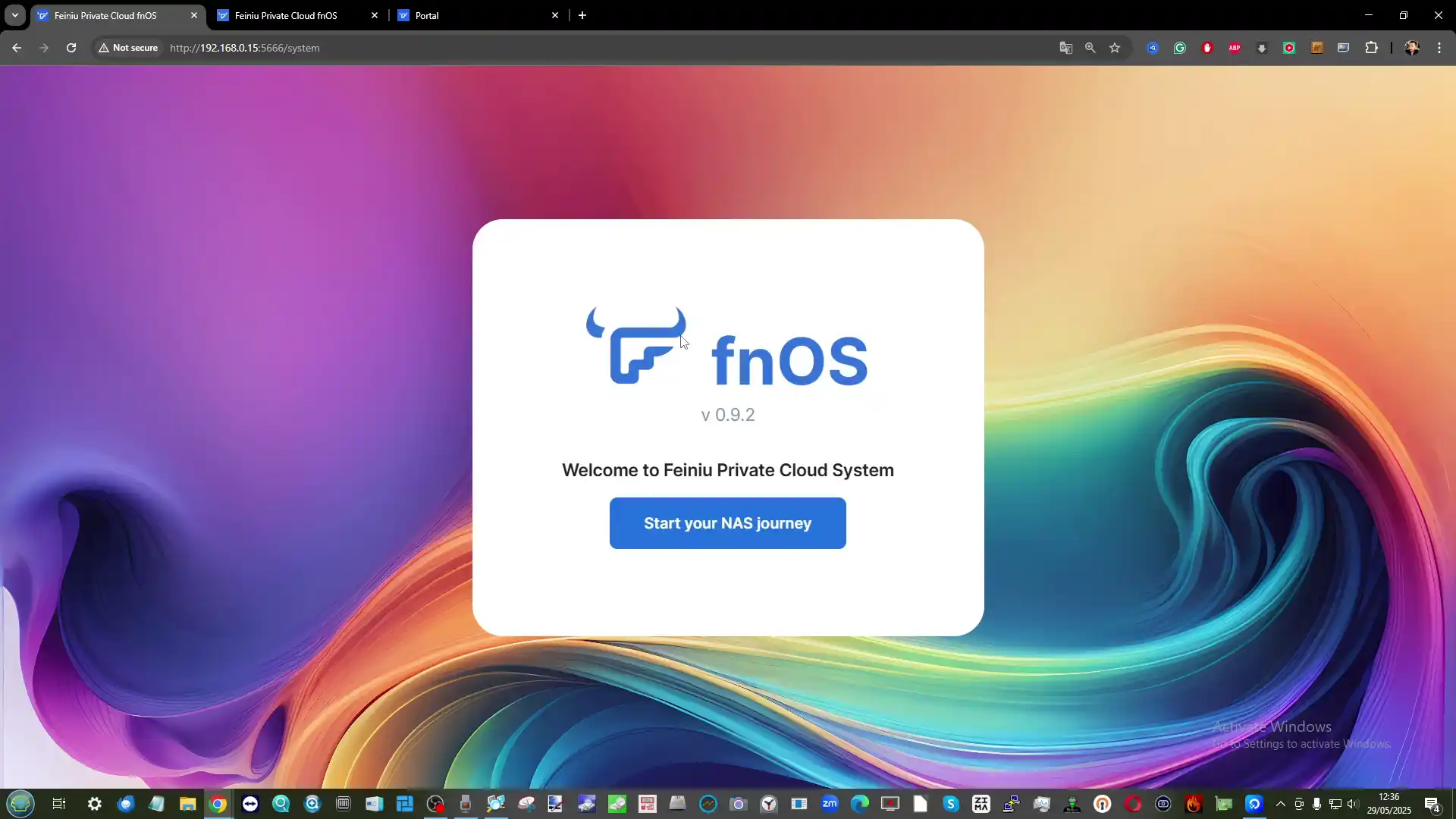
However, fnOS arrives with notable caveats. As a closed-source system with minimal public documentation, there is currently no way to verify its internal processes, telemetry behaviour, or long-term data integrity protections. Moreover, its security architecture lacks advanced features like two-factor authentication, iSCSi, ZFS or hardened remote access protocols that have fast become an industry standard of many other NAS software options in the market.
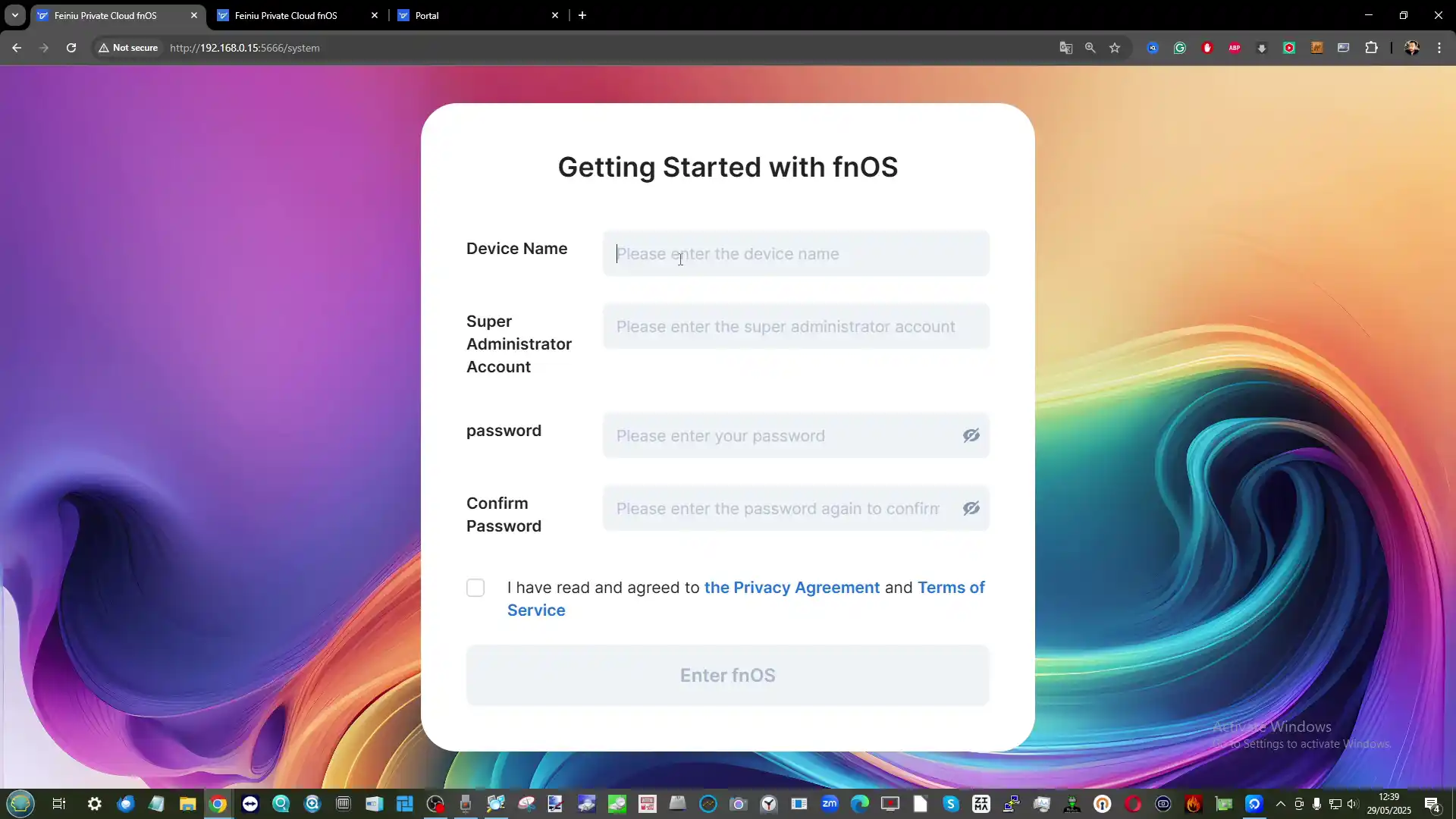
Language support outside of Simplified Chinese is also not fully implemented, creating potential navigation barriers for international users. While the interface and features may seem appealing on the surface, fnOS is still in a formative stage — and with it come the usual risks of data loss, unpatched vulnerabilities, and limited user support. As this review will show, fnOS represents a curious blend of innovation, imitation, and potential. But its closed nature, beta status, and regionally restricted development raise several questions about its readiness for use beyond a testing environment.
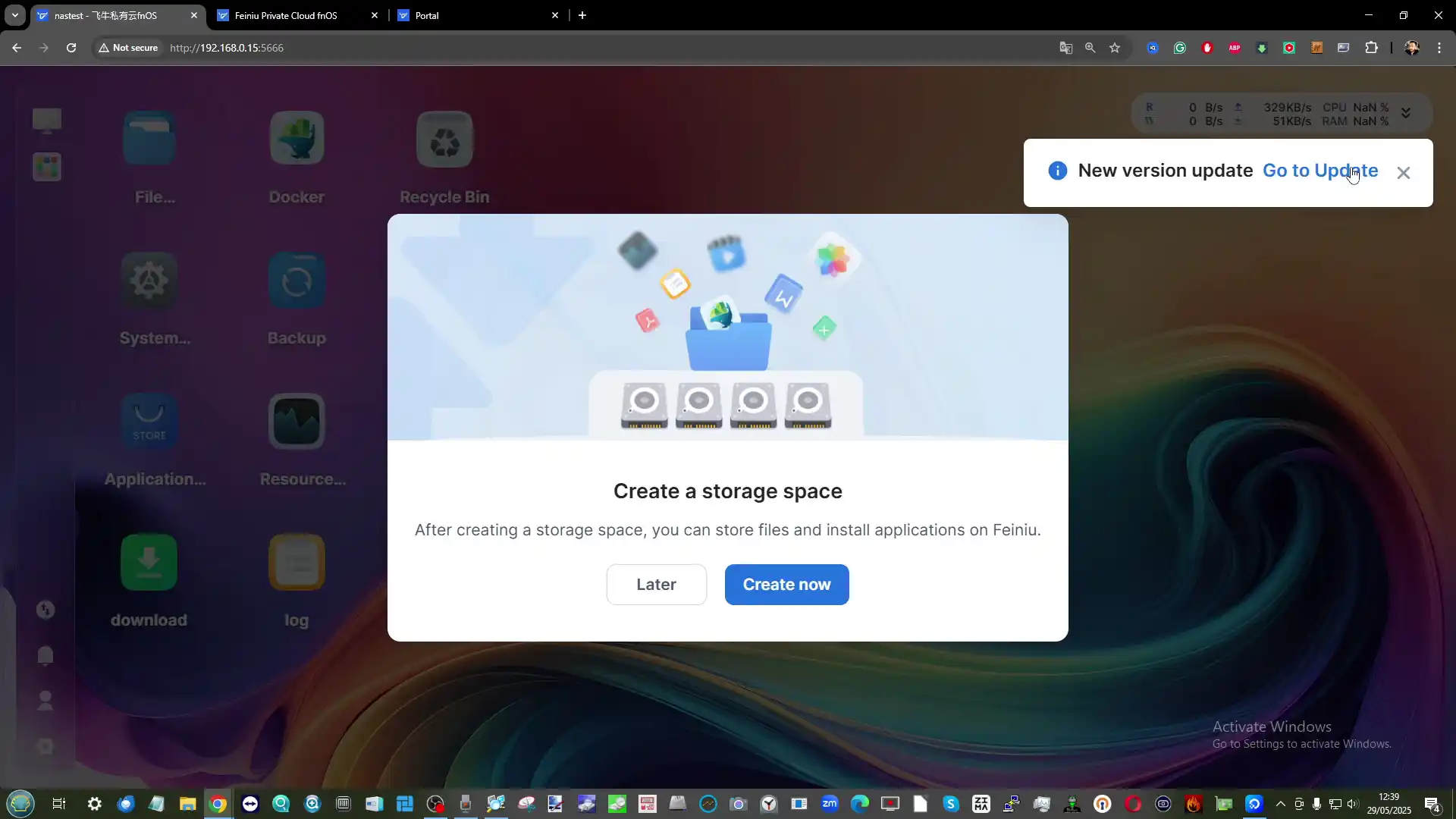
Disclaimer for Users Considering fnOS Right Now
Anyone considering the use of Feiniu Private Cloud (fnOS) should do so with full awareness of the risks inherent in testing an early-stage, closed-source operating system. Although the software is being actively developed and presents a relatively complete GUI with numerous features, it remains in public beta. The system has not yet undergone broad public scrutiny, independent code audits, or transparent vulnerability testing, making its real-world reliability uncertain. The developers themselves have issued formal cautions, explicitly stating that the beta version may cause system crashes, compatibility problems, or data loss. Users should avoid deploying fnOS on primary NAS systems, in business environments, or on any hardware storing valuable or irreplaceable data. Thorough offline backups should be made prior to installation, and any testing should be performed in a non-critical sandbox environment. The system’s UI is currently presented almost entirely in Simplified Chinese, with no comprehensive English language support available at this stage. Translation tools such as Google Lens or Microsoft Edge’s built-in translation functions may offer partial usability, but navigation and configuration still present challenges for non-Chinese speakers.
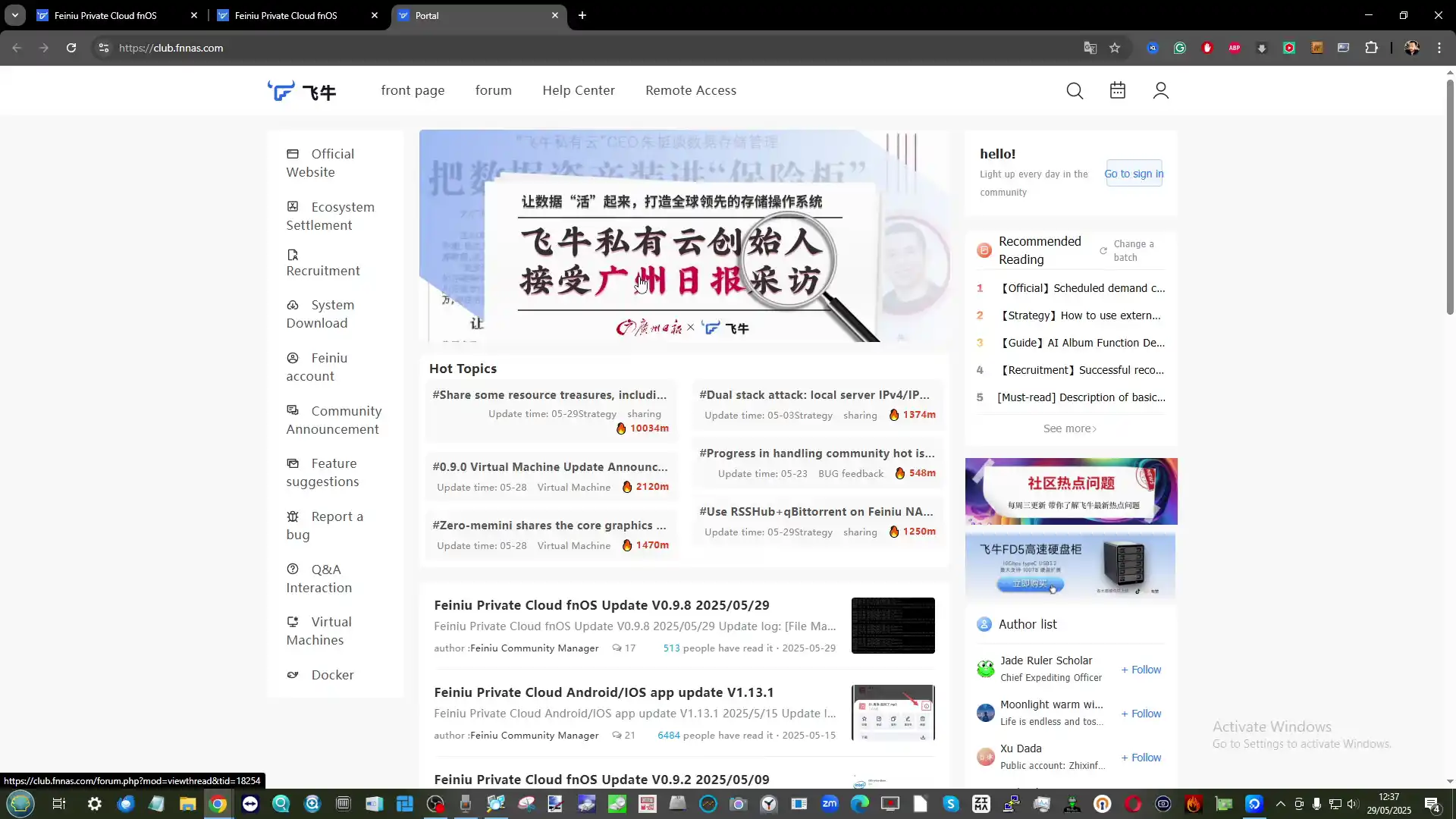
Security considerations are especially important. fnOS lacks industry-standard safeguards such as two-factor authentication, secure portal client tools, and deeper role-based access controls. There is also no detailed public disclosure about how the system handles network traffic, cloud synchronization, or metadata collection, which is a point of concern given its integration with AI services and remote access features. At present, it is unclear whether any telemetry or user analytics are sent back to the developers, and the absence of source code prevents community verification. In summary, fnOS should be treated as experimental software. While it may offer a glimpse into emerging trends in the Chinese NAS market and present intriguing ideas around media organization and local AI integration, users must approach it with caution and a strong understanding of the security and stability limitations that accompany early-stage, proprietary platforms.
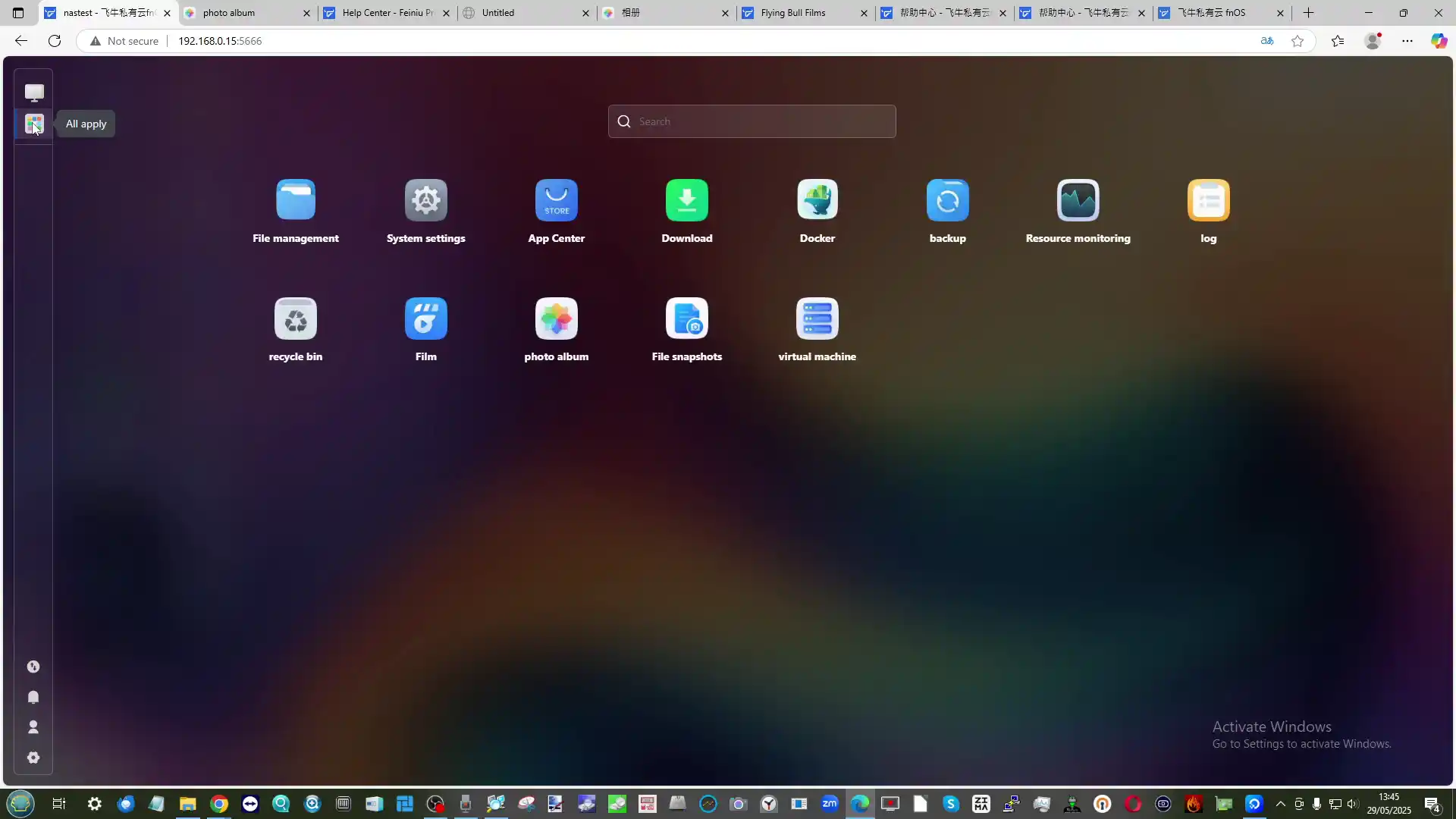
Design and UI
The user interface of fnOS is visually structured and attempts to emulate the layout seen in many modern NAS operating systems, with clear menu segmentation and app-like modularity. Upon installation, users are presented with a desktop-style environment that includes access to system configuration, storage management, multimedia tools, and containerized applications.
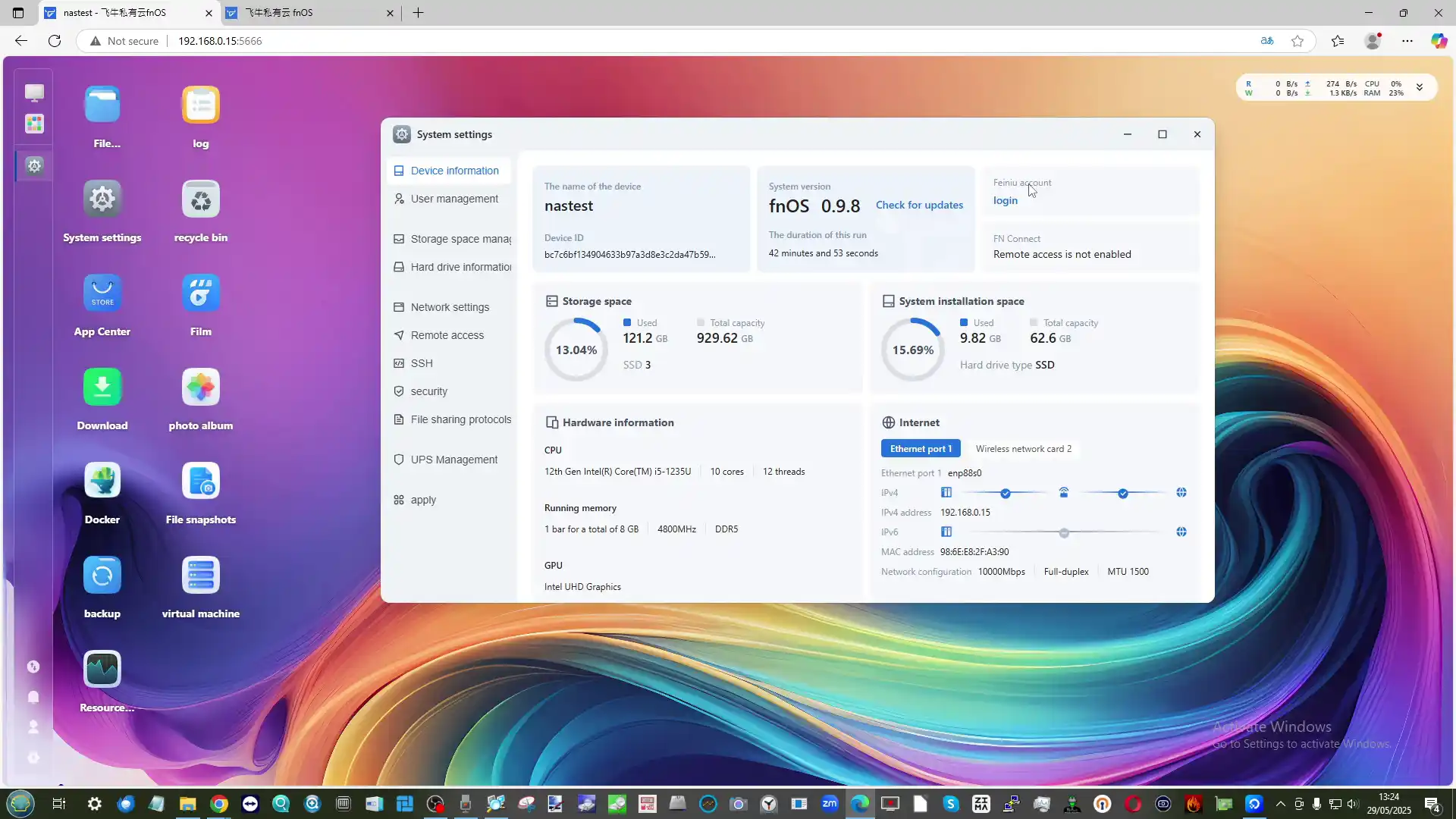
Navigation is conducted through a web browser, and the interface features icon-driven panels that mirror the design language of platforms like DSM (Synology) or QTS (QNAP), albeit with some localization quirks. Despite its early-stage development, the UI demonstrates a coherent structure that is functional, if not yet polished.

However, the current implementation suffers from language accessibility issues. The interface is only available in Simplified Chinese, and efforts to translate the interface using automated tools like Google Translate are mostly ineffective, as it relies on dynamic rendering elements that these tools cannot parse. Microsoft Edge’s translation feature performs better but still results in fragmented grammar and partially translated system prompts. This creates a substantial usability barrier for non-Chinese speakers, particularly when trying to configure advanced settings such as RAID arrays, user permissions, or application environments.

In terms of responsiveness and performance, the UI behaves relatively smoothly even on modest hardware. Common actions such as creating storage volumes, configuring shares, or launching apps execute without visible lag. While some buttons and system prompts may feel incomplete or imprecise due to beta status, core layout principles like logical menu placement and centralized settings are well applied. The overall experience suggests that while fnOS is clearly designed with user convenience in mind, it is not yet refined enough for a wide international audience.

Services and Features
fnOS provides a wide array of features targeting home media consumption, local data storage, and remote accessibility. One of its most promoted capabilities is its media handling, with built-in applications for organizing video, music, and photos. The system includes automatic metadata scraping for movies and TV shows, AI-driven facial and object recognition for photo libraries, and a basic music playback utility.

These media apps mimic the functionality of solutions like Plex or Jellyfin, offering poster walls, subtitle downloads, and transcoding options. However, it should be noted that many of the multimedia tools are proprietary adaptations or containers wrapping existing open-source tools rather than purpose-built innovations.

The system also integrates AI-driven services at the local level. The photo application includes features like character-based photo aggregation and image search via text input. Users can select from multiple AI models depending on resource availability and desired recognition accuracy, though it’s not entirely clear whether these models run exclusively offline or leverage external processing. While the integration appears functional, it is not yet well-documented, and the practical use cases are still limited by the interface’s language barriers and overall beta stability.
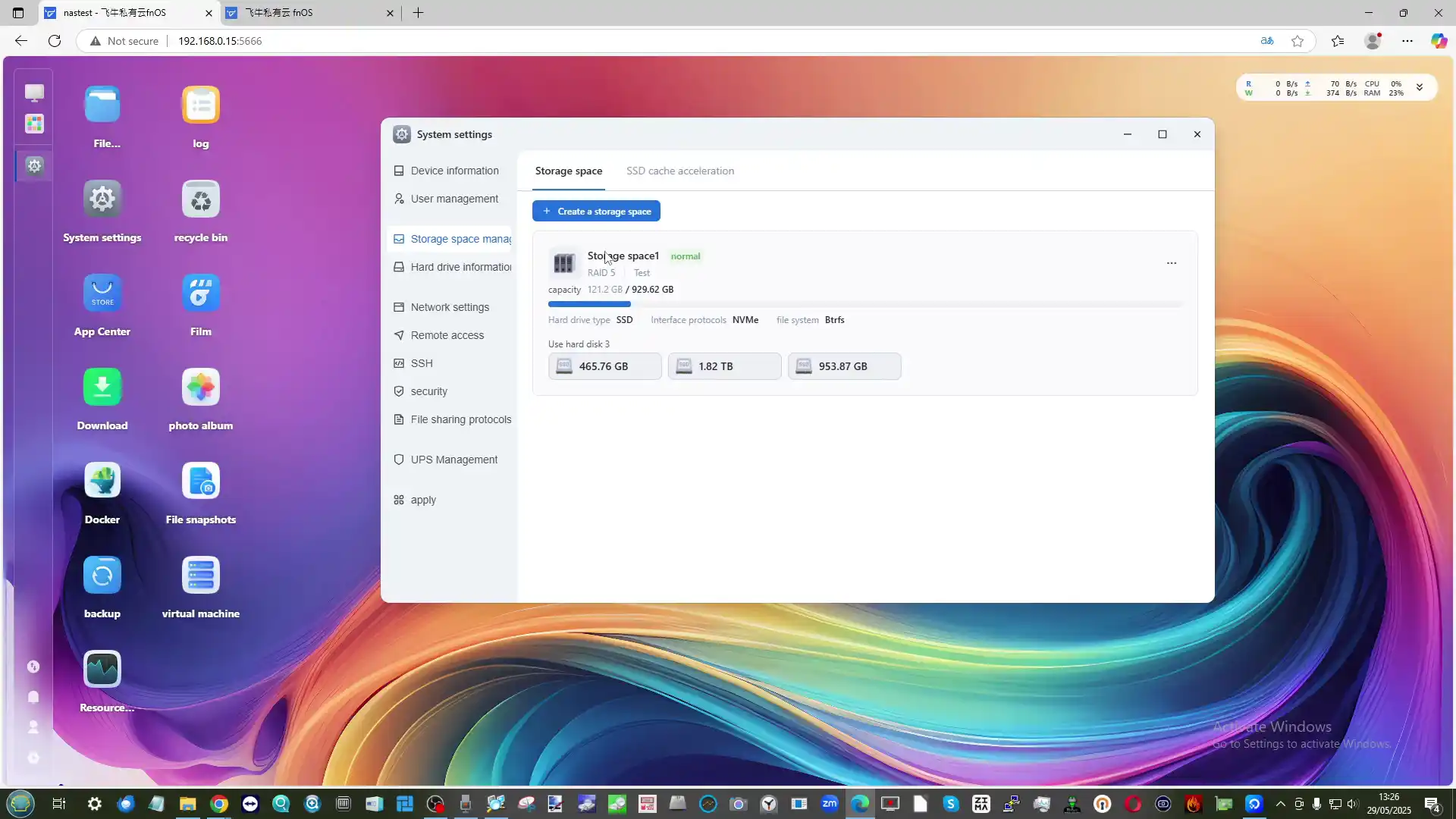
fnOS includes standard NAS features such as RAID configuration (supporting levels like RAID 0, 1, and 5), SSD caching, and storage expansion. It uses BTRFS or EXT4 as file system options, with support for snapshot creation on BTRFS volumes. Network protocols such as SMB3, NFS, FTP, and WebDAV are available, with multi-channel SMB enabled by default.
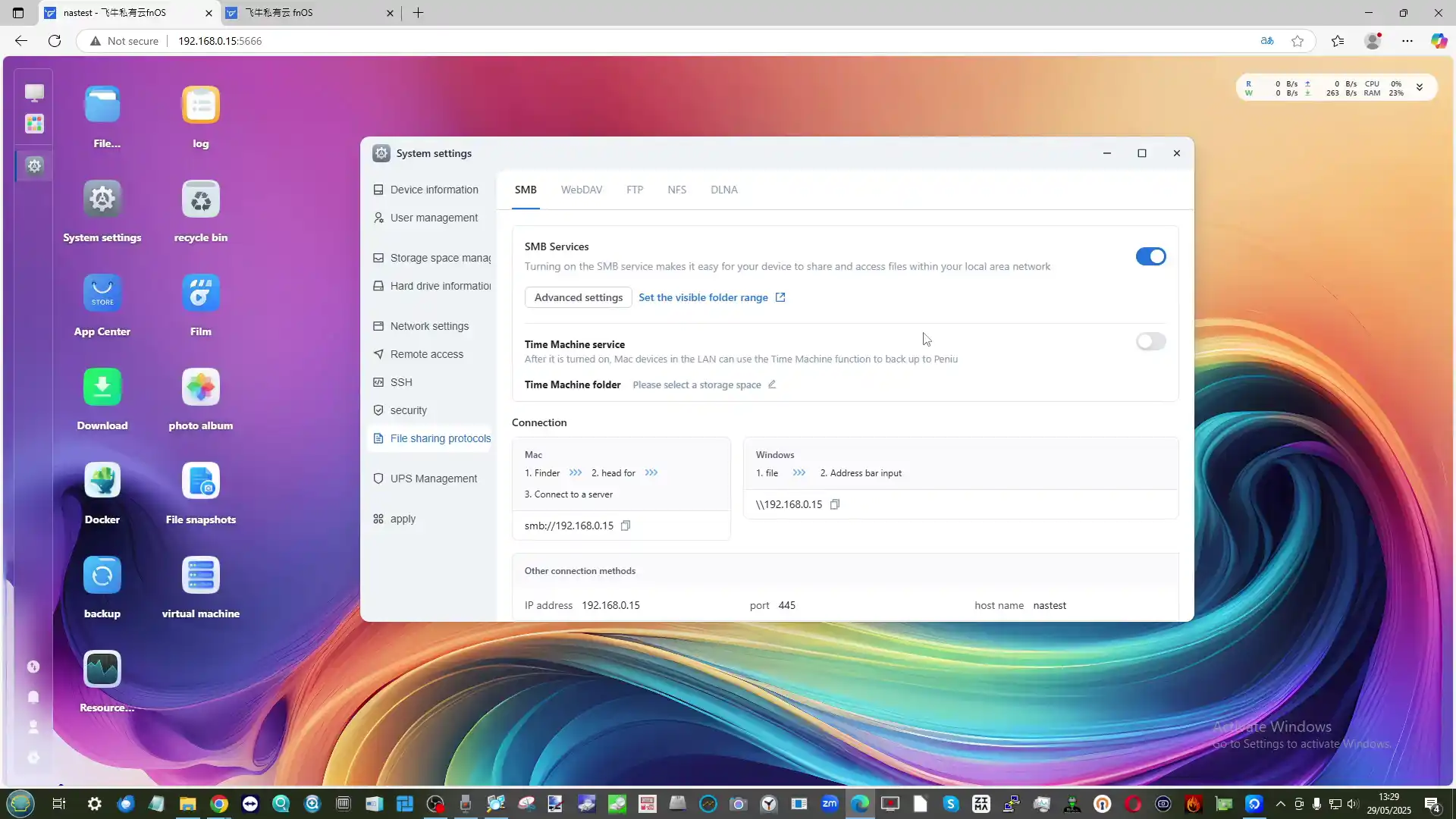
There is also a built-in file manager allowing basic copy, move, download, and sharing functions, including time-limited and password-protected links. While ZFS is not supported, the storage tools provided are sufficient for basic to intermediate users familiar with RAID and shared folder management.
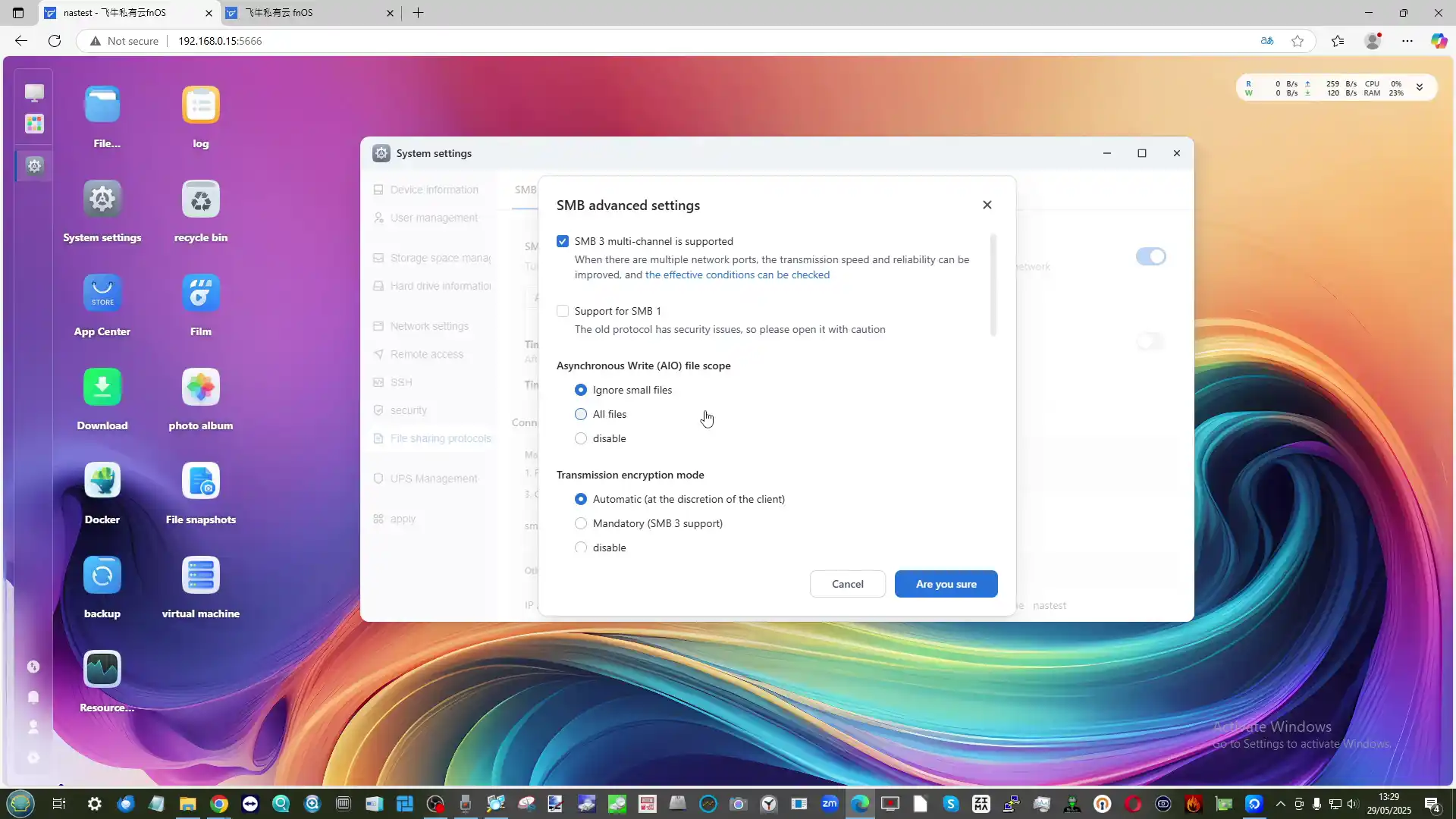
The included App Center is container-based and supports various community and utility applications. Notable entries include Qbittorrent, Jellyfin, Transmission, Alist, Portainer, and Chromium, alongside more region-specific tools like 115 Network Disk and Baidu Cloud integration.
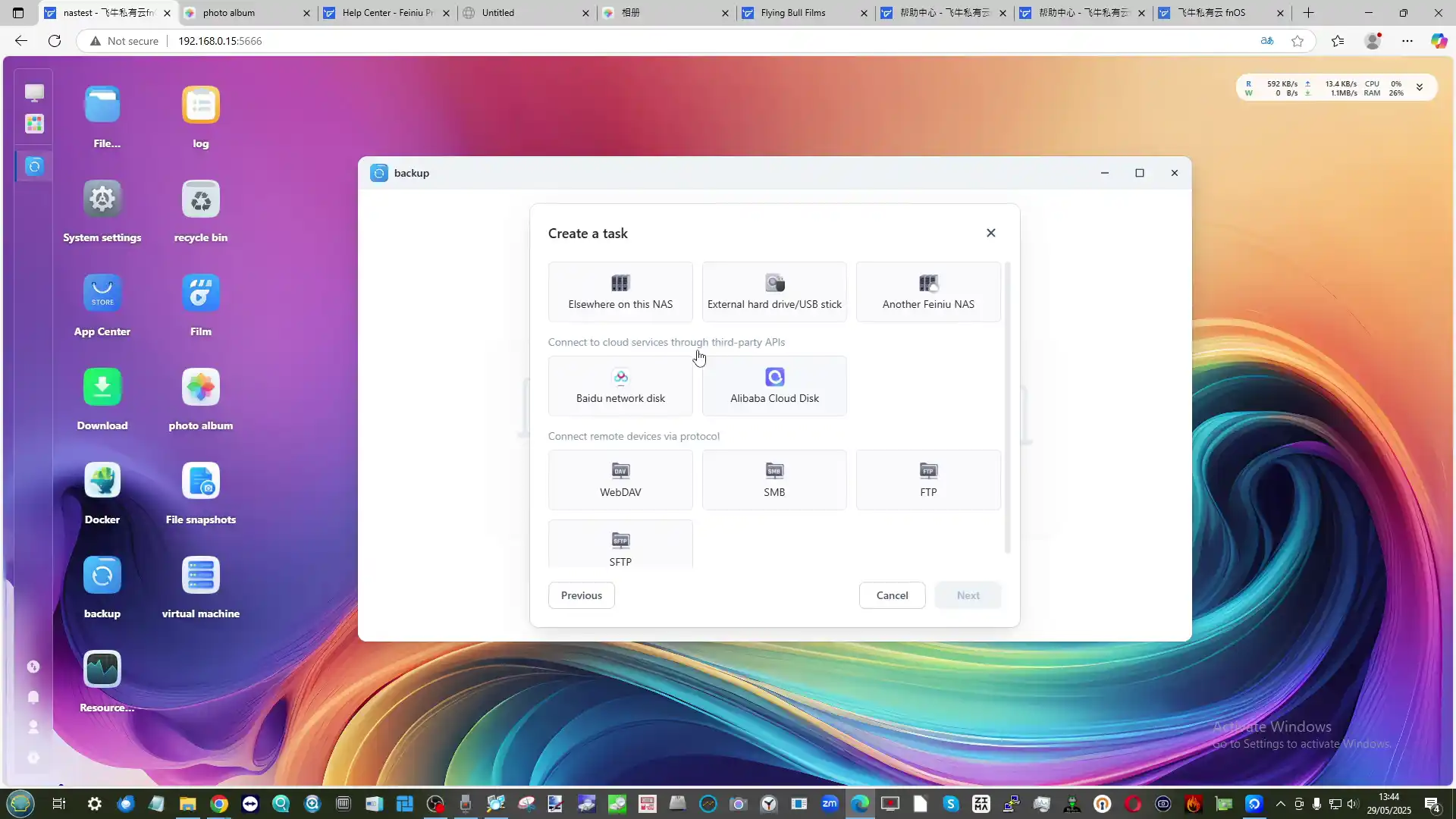
The application store largely reflects popular Dockerized solutions and offers minimal documentation on integration specifics. fnOS also includes a rudimentary virtual machine manager, which allows for Windows VM creation via ISO files, though functionality is basic.
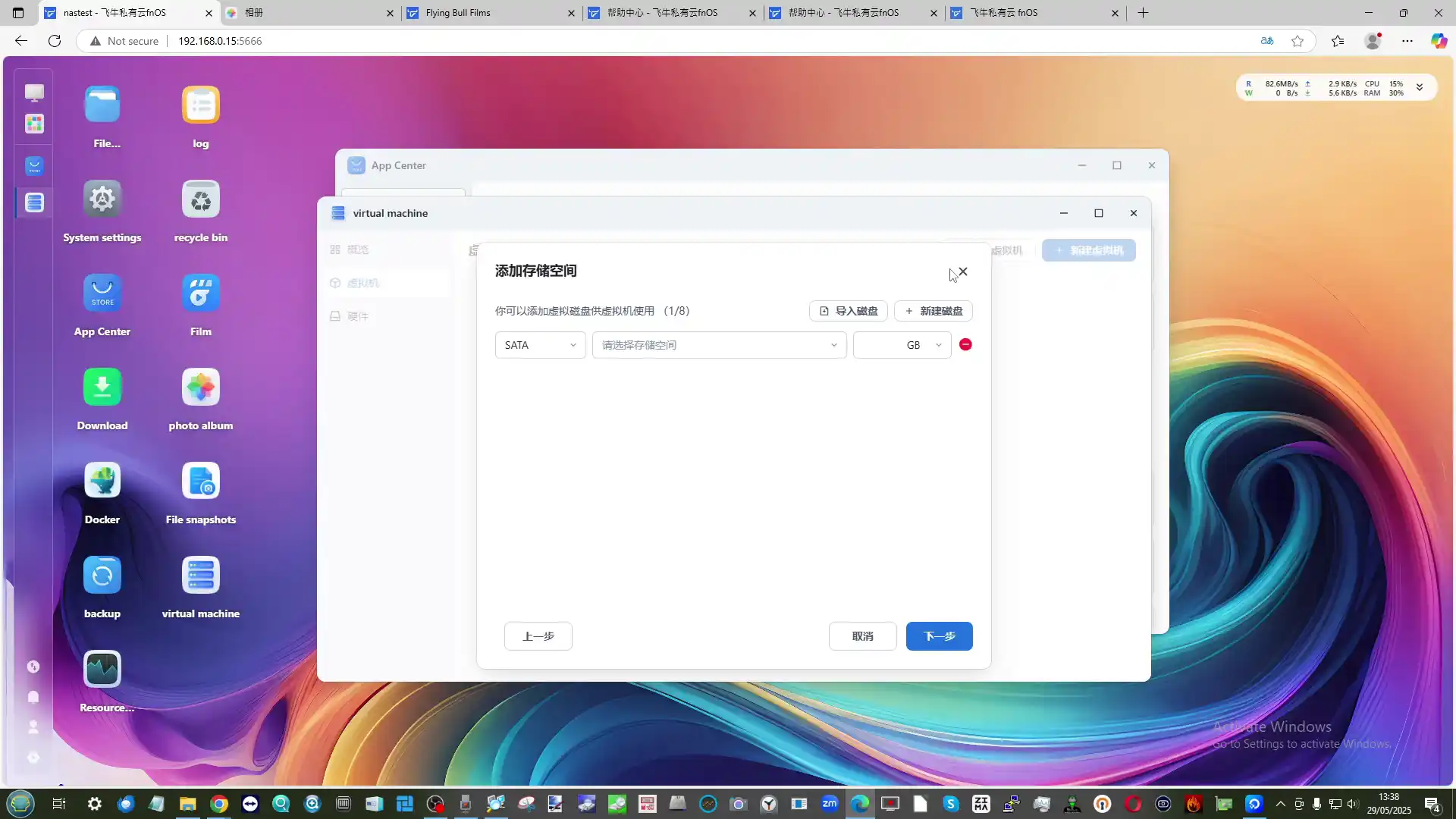
Backup tools support both local folder sync and remote NAS replication, but third-party cloud sync is limited in scope and likely tied to domestic Chinese services.
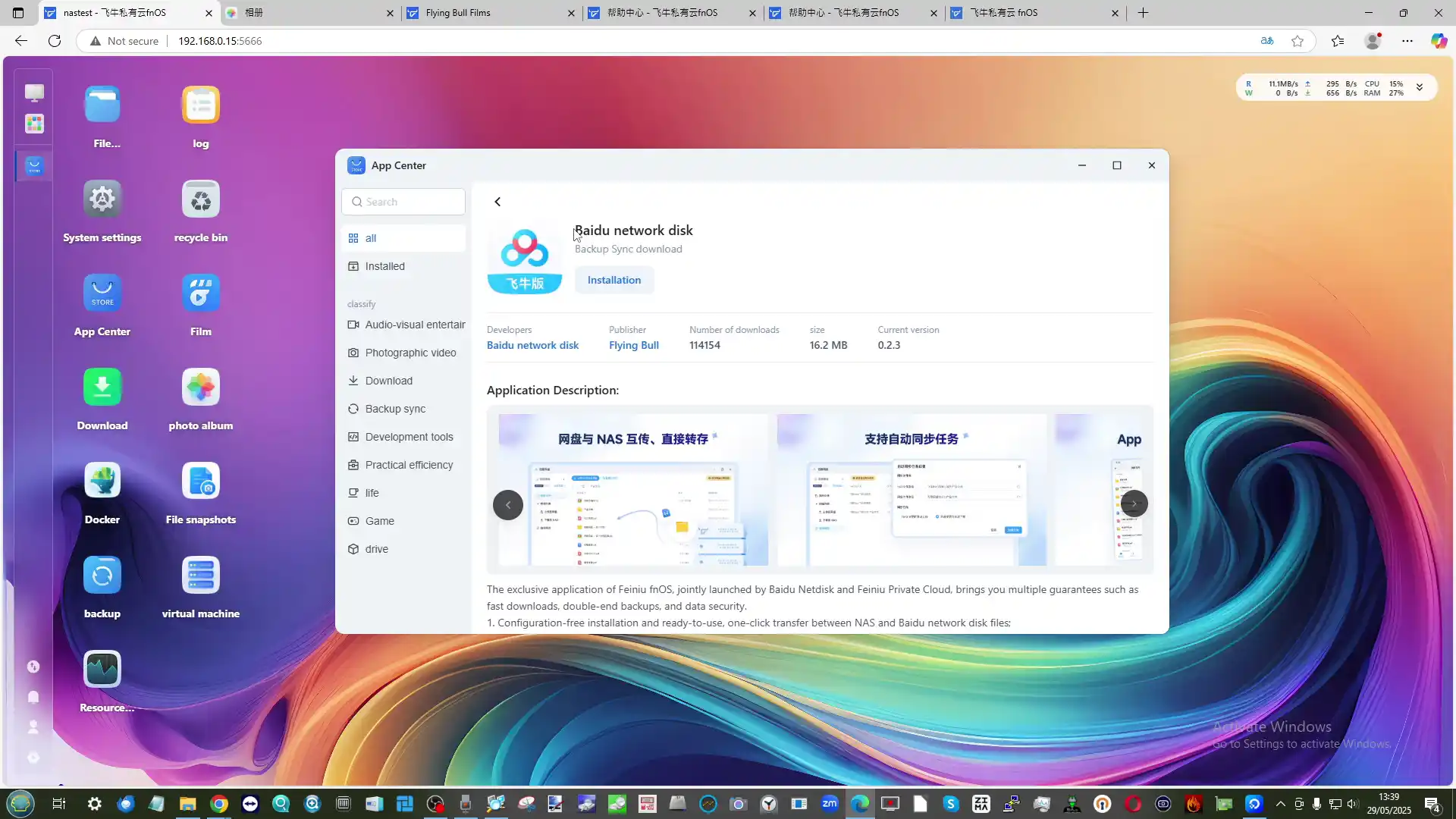
| Feature Category | fnOS Beta | Comment / Status |
|---|---|---|
| RAID Support | RAID 0, 1, 5 | No support for RAID 6 or ZFS |
| File Systems | BTRFS, EXT4 | BTRFS supports snapshots |
| Snapshot Support | Yes (BTRFS only) | Basic UI, no snapshot schedule interface |
| Media Metadata Scraping | Yes | Video and photo support; similar to Plex/Jellyfin |
| AI Photo Recognition | Yes | Face/object recognition, customizable AI models |
| File Sharing Protocols | SMB3, NFS, FTP, WebDAV | SMB multi-channel supported |
| Application Center | Docker-based | Mostly existing open-source tools (e.g., Jellyfin, Alist) |
| VM Support | Yes | Limited functionality; Windows ISO only |
| Backup & Sync | Local and NAS-to-NAS | Minimal third-party cloud support |
| Transcoding | Yes (dependent on hardware) | Native and container-based transcoding support |
| Two-Factor Authentication | No | Single-password access only |
| Language Support | Chinese only (no multilingual UI yet) | Machine translation unreliable |
Pros and Cons of fnOS?
One of the most notable strengths of fnOS is its broad feature coverage for a beta-stage NAS operating system. Despite being early in its development, it includes many of the core functions expected from a modern NAS platform: multi-tiered RAID support, snapshot capabilities (via BTRFS), Docker-based application hosting, multimedia indexing, and even virtual machine support.
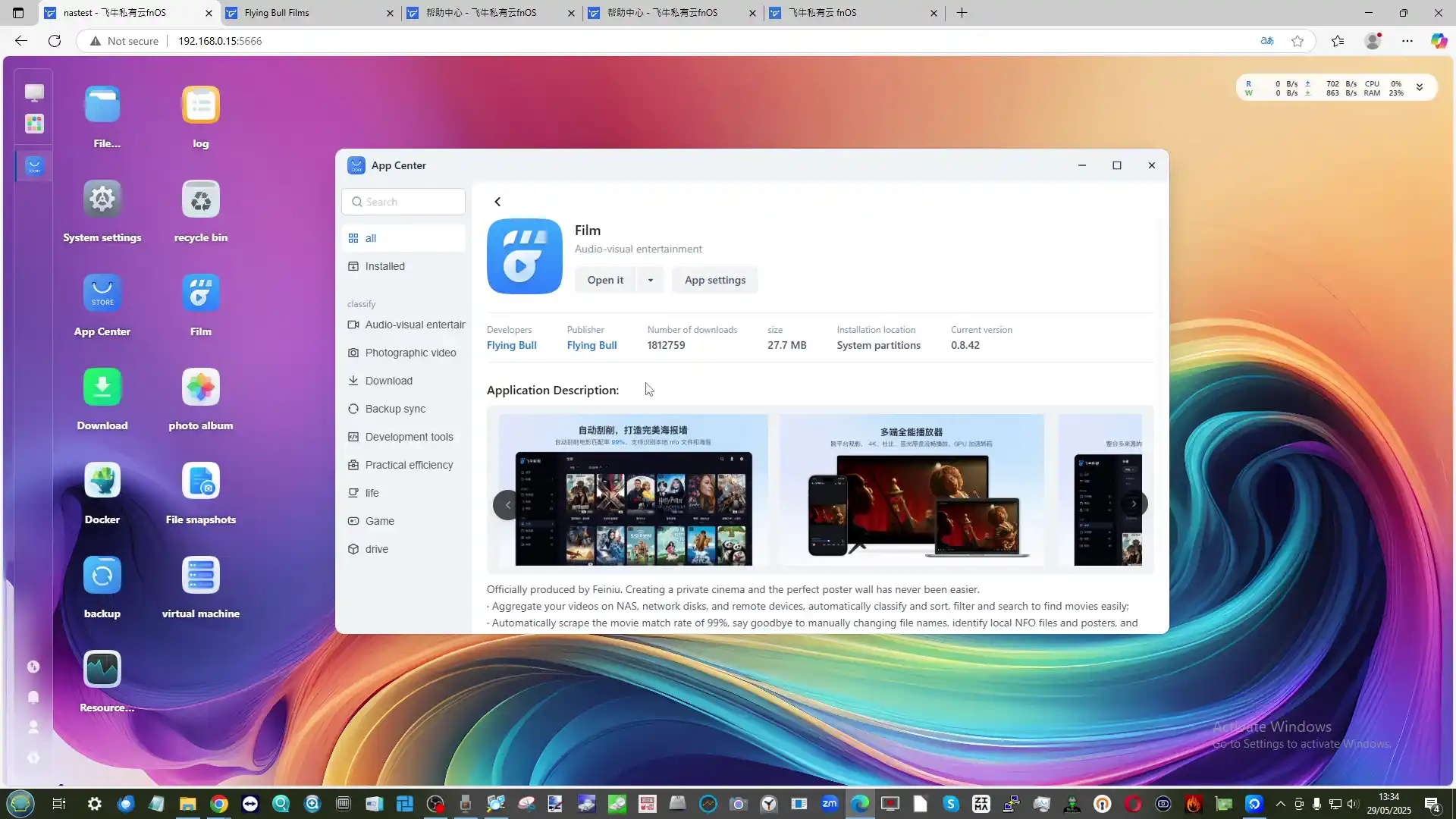
For home users interested in media storage, the built-in tools for automatic metadata scraping and subtitle acquisition, combined with basic transcoding support, make it a practical solution for centralized media access — particularly when paired with a TV interface or mobile app.
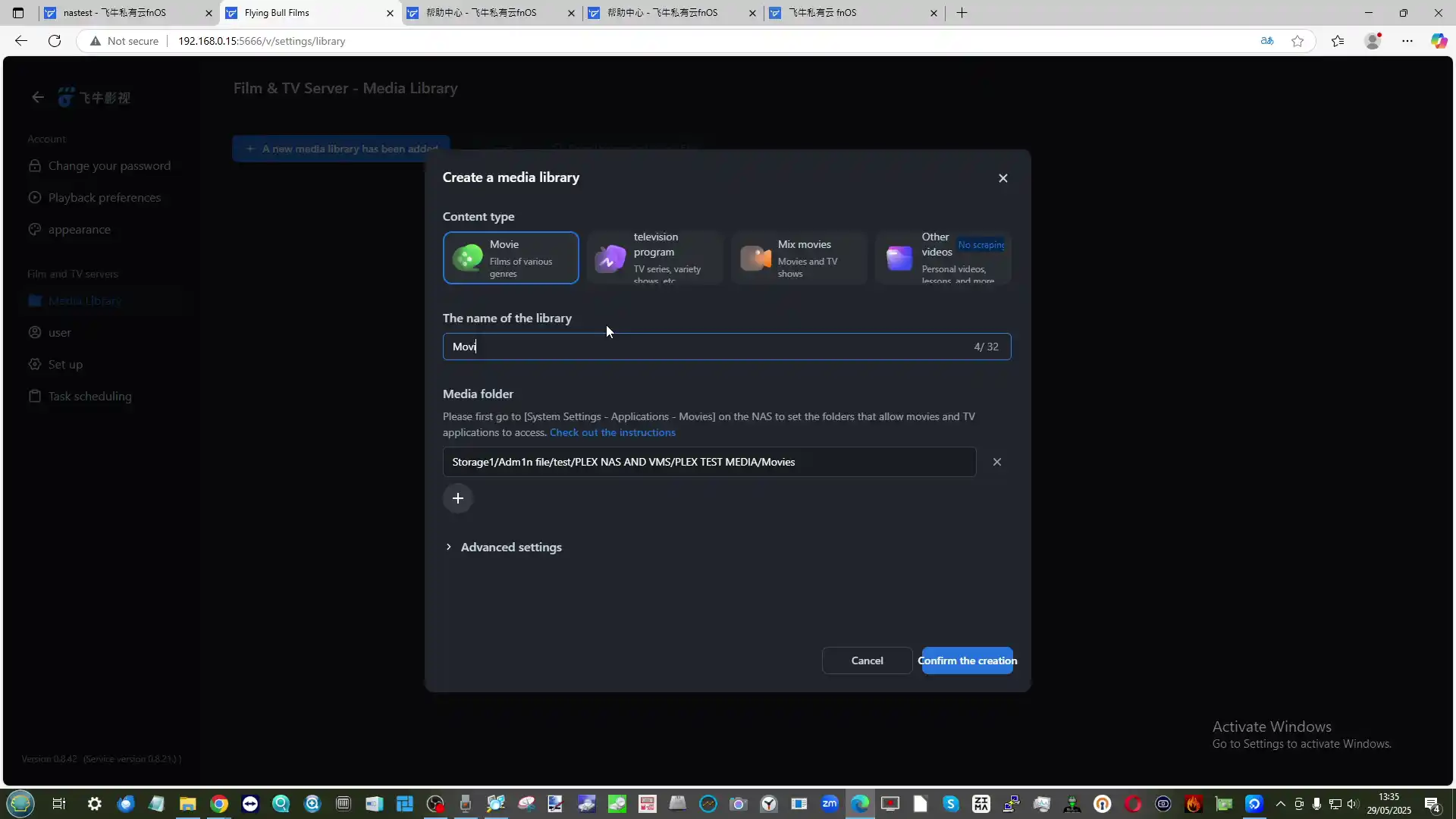
The inclusion of AI-powered image recognition and customizable AI models in the photo management application is another area where fnOS differentiates itself. Users can configure local facial and object recognition models to assist in organizing large photo libraries, and even perform text-based image searches. While this isn’t entirely unique in the NAS market, the ability to select from different AI models and the implementation of geolocation tagging and facial clustering demonstrates that the development team is thinking beyond basic storage functionality. It suggests potential for future expansion into smart content management if development continues at pace.
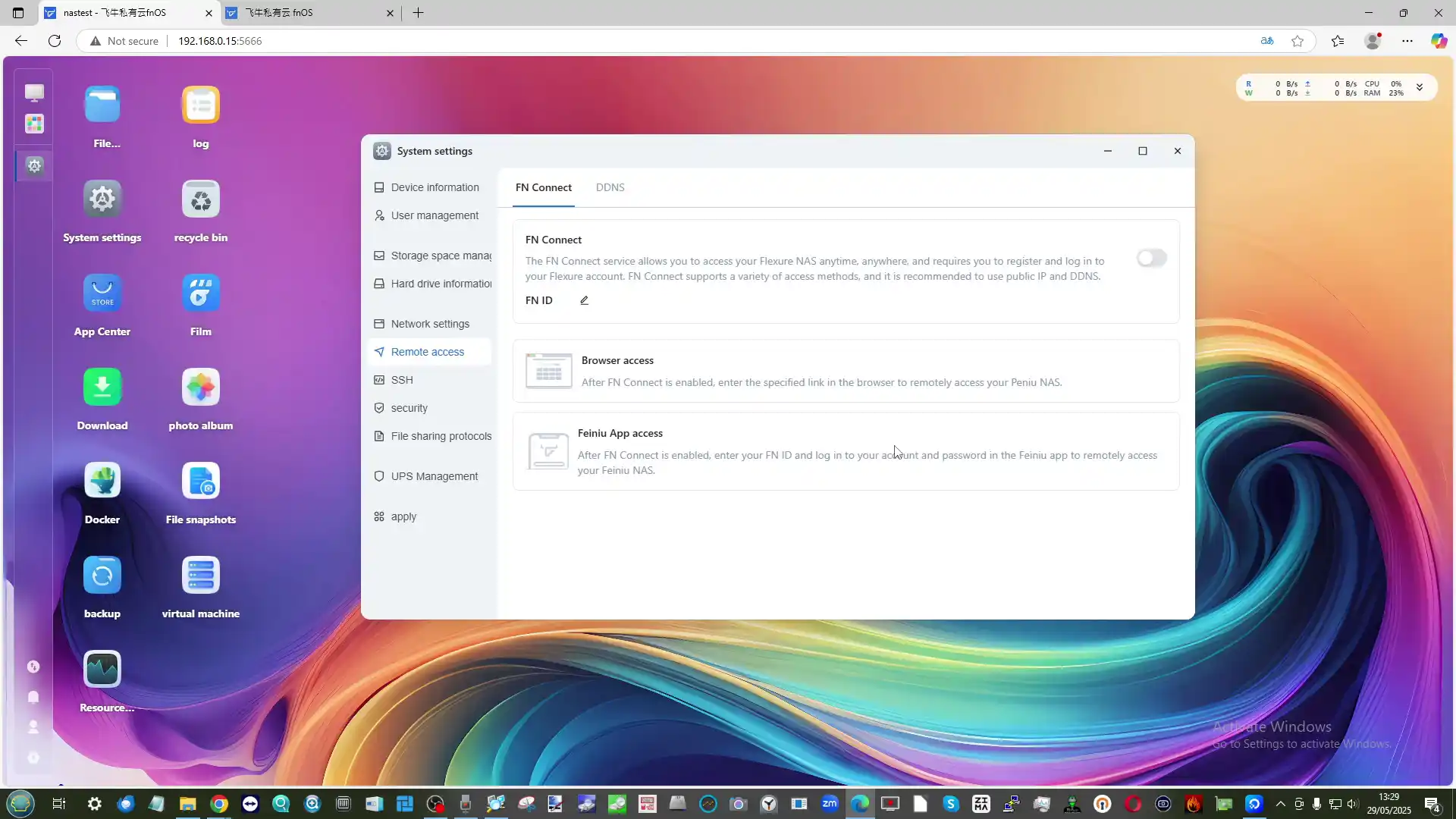
However, fnOS also presents several clear drawbacks. Security remains underdeveloped, with no support for two-factor authentication, no publicly available information on encryption practices, and limited visibility into how data is handled or transmitted over the network.
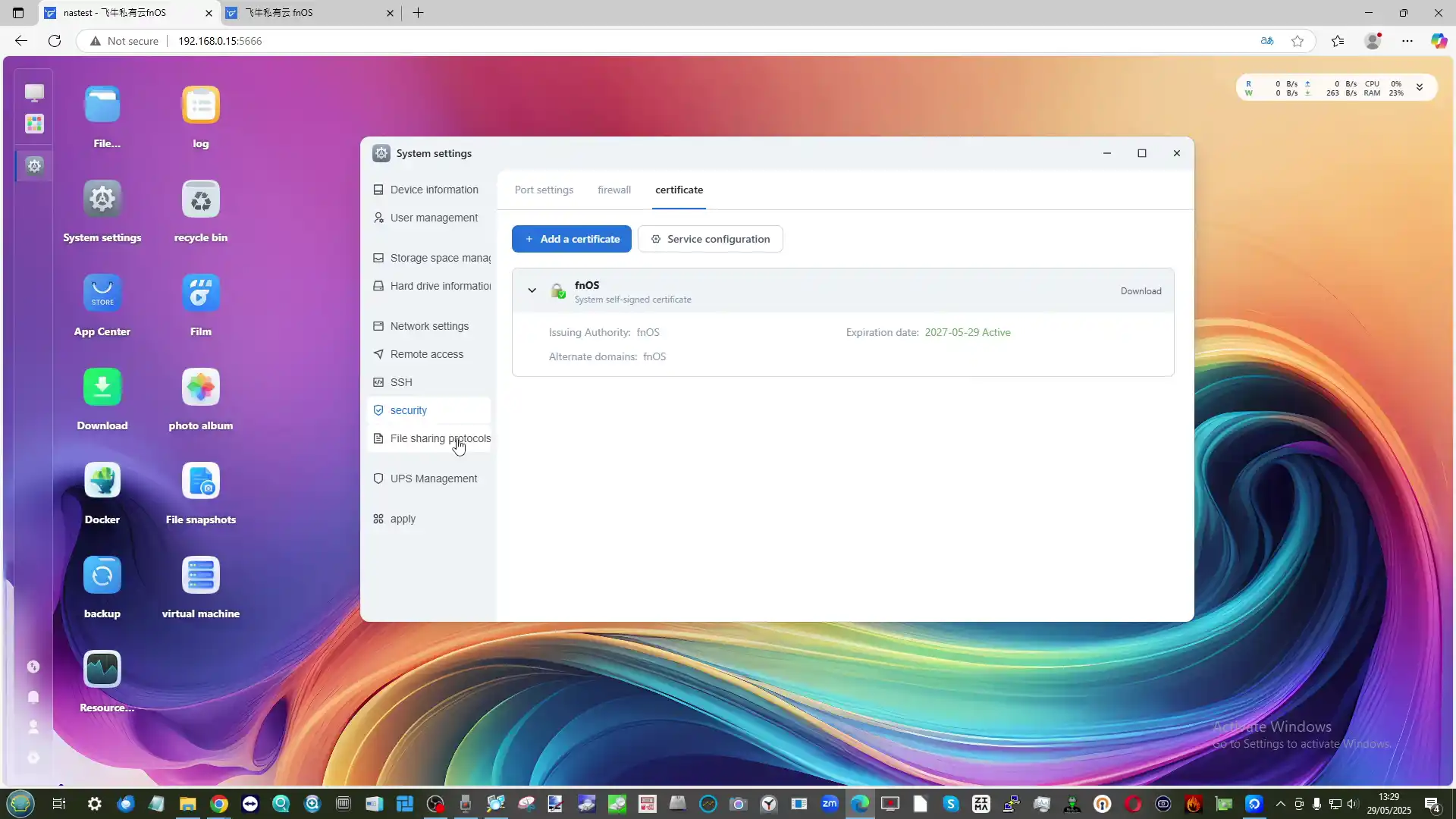
While SSL certificates and basic firewall tools are present, the absence of fine-grained user permission structures or auditing functionality makes it unsuitable for multi-user environments or deployments where data privacy is a primary concern. Additionally, remote access services built into fnOS are proprietary and undocumented, which raises further questions for users concerned about trust and control over their network.
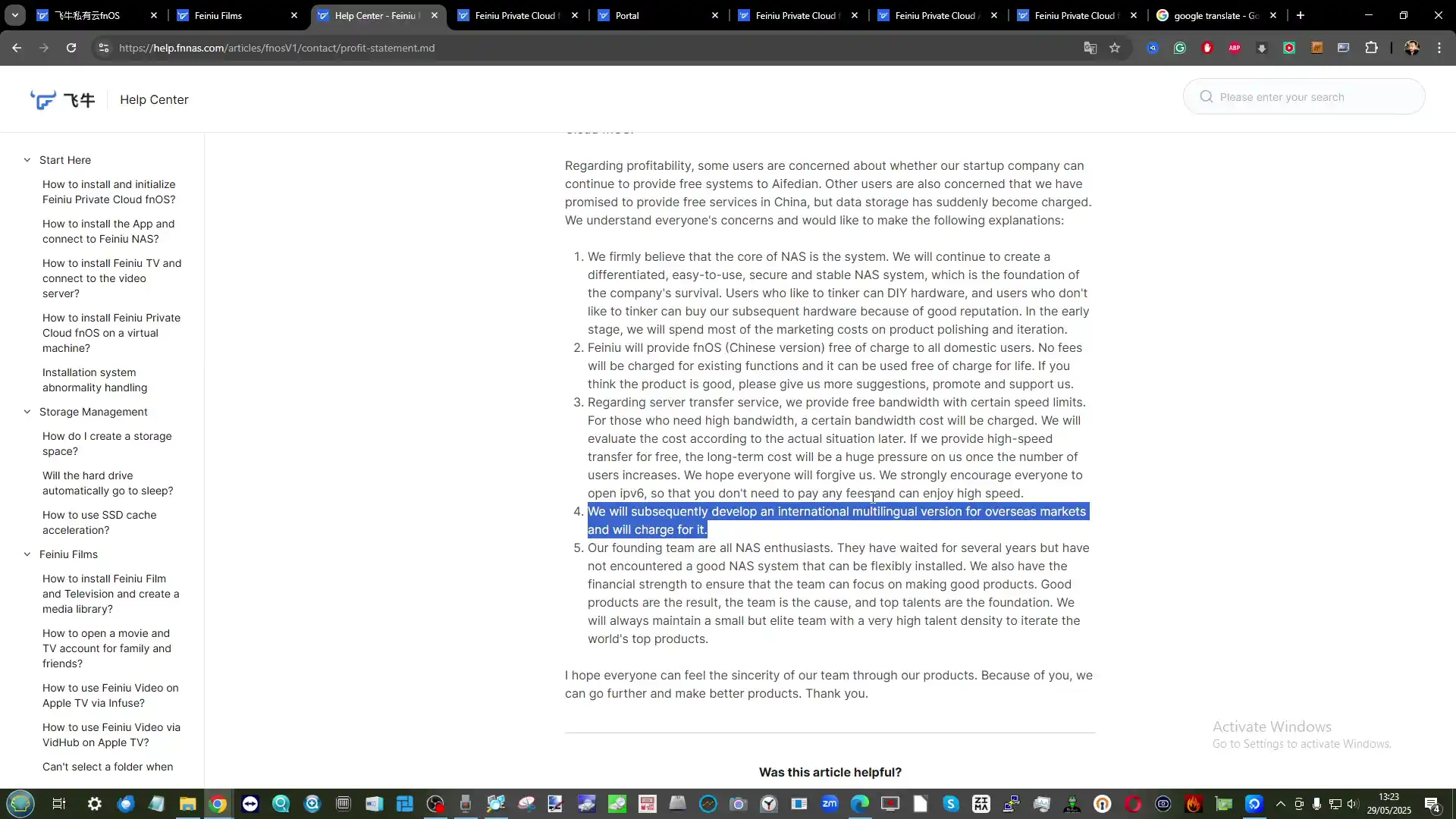
Another key limitation is the lack of proper language support and international readiness. At the time of writing, the UI is only available in Simplified Chinese, and the developers have not confirmed a timeline for multilingual support, also highlighting that this will be phased into a paid/commercial use version. This, combined with limited documentation and forum discussion outside of Chinese-speaking communities, makes troubleshooting and adoption by non-Chinese users significantly more difficult. Moreover, as a closed-source system, fnOS cannot benefit from the auditing, forking, and community patching practices that open-source NAS platforms rely on to maintain user trust and long-term sustainability.
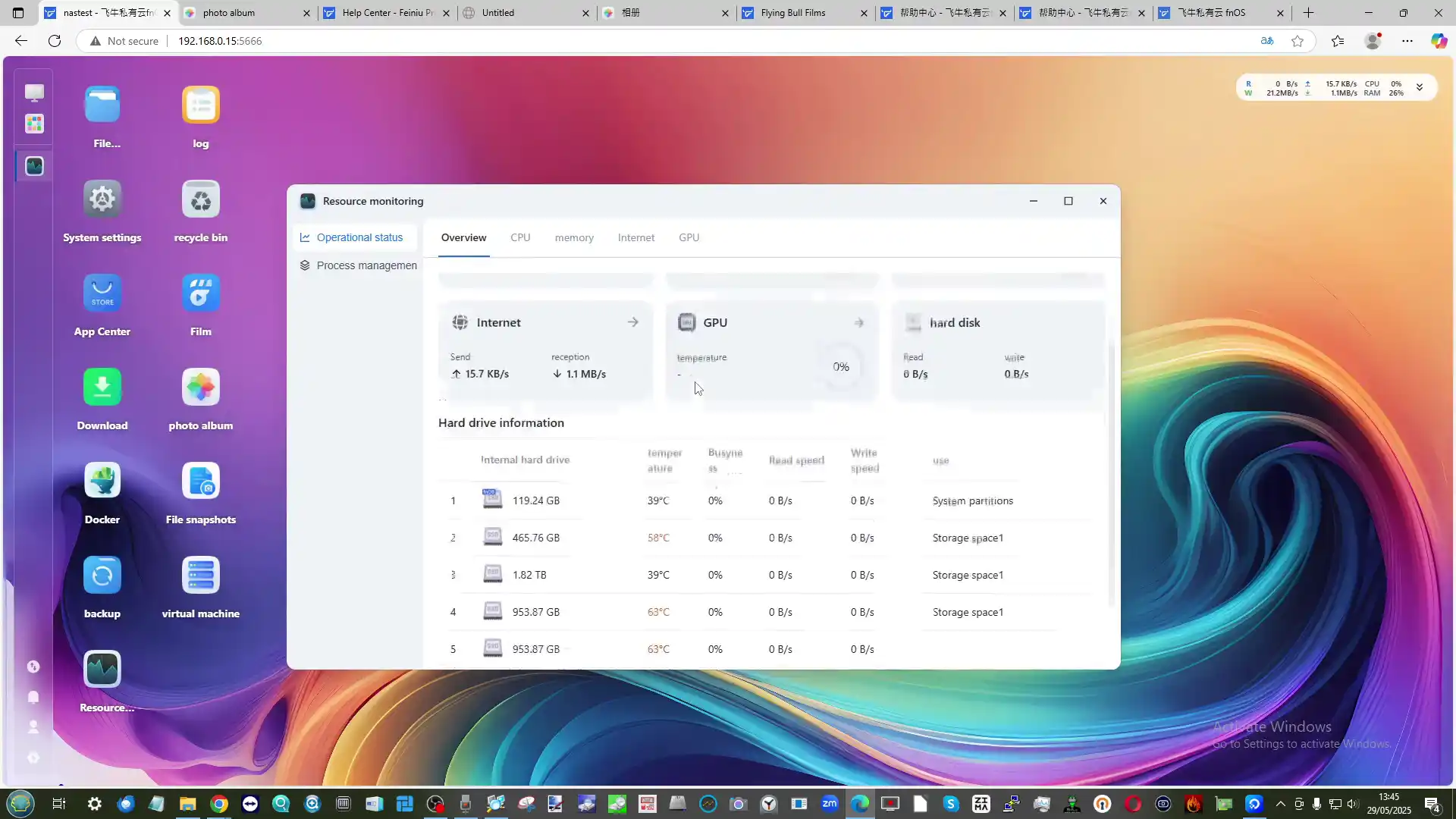
Conclusion and Verdict of fnOS NAS Software
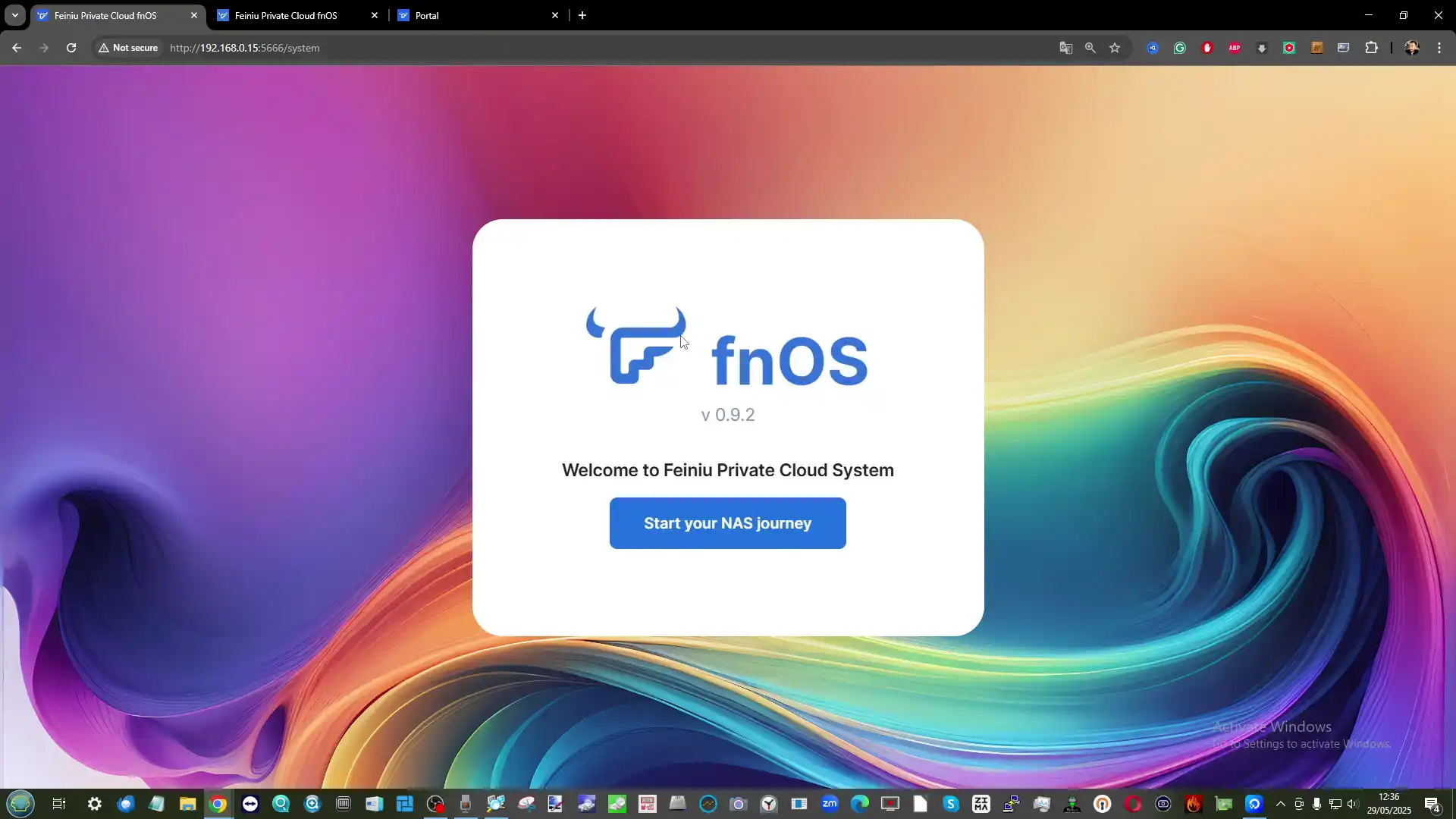
fnOS represents an ambitious attempt to build a full-featured, home-friendly NAS operating system from the ground up, targeting a domestic Chinese audience first and foremost. Its functionality is surprisingly broad for a beta, covering storage management, AI-powered media organization, Docker app deployment, and local VM hosting. However, its closed-source nature, limited language support, and undeveloped security framework make it unsuitable for deployment outside controlled test environments. For users within China who are technically confident, aware of the risks, and seeking a free, self-managed solution, fnOS may have appeal. For international users, particularly those prioritizing transparency, privacy, or robust security, fnOS remains a curiosity—not yet a contender.
Summary: fnOS Beta – Pros and Cons
| Pros | Cons |
|---|---|
| Broad feature set for a beta (RAID, snapshots, media) | No multilingual UI; Chinese only |
| Integrated AI photo tools and metadata scraping | Lacks 2FA and granular user security controls |
| Docker container and VM support | Closed-source; limited transparency on data handling |
| Fast, responsive UI with RAID and SSD caching options | Not suitable for production or critical data environments |
| Free for domestic users with ongoing updates | No official documentation or English-language user support |
🔒 Join Inner Circle
Get an alert every time something gets added to this specific article!
This description contains links to Amazon. These links will take you to some of the products mentioned in today's content. As an Amazon Associate, I earn from qualifying purchases. Visit the NASCompares Deal Finder to find the best place to buy this device in your region, based on Service, Support and Reputation - Just Search for your NAS Drive in the Box Below
Need Advice on Data Storage from an Expert?
Finally, for free advice about your setup, just leave a message in the comments below here at NASCompares.com and we will get back to you. Need Help?
Where possible (and where appropriate) please provide as much information about your requirements, as then I can arrange the best answer and solution to your needs. Do not worry about your e-mail address being required, it will NOT be used in a mailing list and will NOT be used in any way other than to respond to your enquiry.
Need Help?
Where possible (and where appropriate) please provide as much information about your requirements, as then I can arrange the best answer and solution to your needs. Do not worry about your e-mail address being required, it will NOT be used in a mailing list and will NOT be used in any way other than to respond to your enquiry.

|
 |
The BEST NAS of 2025
Terramaster TOS 7 Preview - Next Gen NAS Ready?
What is QNAP Planning for 2026? Round Up of the QNAP 2025/2026 Event in London
2x 10GbE to USB4 Adapter - DO YOU NEED THIS?
New Gl.iNet Beryl 7, Comet 5G SIM KVM and Flint 3e Value Router Revealed
NEW UGREEN DXP4800 PRO and DXP4800S NAS REVEALED
Access content via Patreon or KO-FI
Discover more from NAS Compares
Subscribe to get the latest posts sent to your email.






Unraid is open source, is Synology open source? A bunch of hypocrites brainwashed by anti-China propaganda are shouting not to use Chinese systems.????????
REPLY ON YOUTUBE
Only storing my ripped 4K UHD/ Blurays, not gonna if CCP looks into my collection ????
REPLY ON YOUTUBE
cant believe this look more functional than HexOS
REPLY ON YOUTUBE
They recently release the Dirve app.
REPLY ON YOUTUBE
People here are so much worried about software that has come from China while your own government spies on them. U guys are hypocrites.
REPLY ON YOUTUBE
After reading the privacy agreement of this product, I have no interest in trying it.
REPLY ON YOUTUBE
Not thrilled its based in China but I do hope HexOS peeps are looking at this and taking inspiration. Both are in beta and this may not be polished, but it is light years ahead of HexOS at the moment. I’d like to see HexOS go this route in their gui front end. That simplistic magenta theme is fugly.
REPLY ON YOUTUBE
欢迎使用
REPLY ON YOUTUBE
This is almost an exact copy of Synology software. Its all setup in the same way. Don’t get me wrong, if someone could fork this and change it, it would be awesome!! But this is the Chinese version of Synology to me. What should be looked at that can be used with confidence is HomeServerHQ. Can use an actual ISO install
REPLY ON YOUTUBE
Is it support vartualization? Can I install Ubuntu in this NAS?
REPLY ON YOUTUBE
I have been using fnOS for about a year. I had two spare ssd and a zima blade. So, I decided to build a media server. First, I tried trueNAS scale. Eight gig ram just didn’t work well. So, I searched and found fnOS. It helps that I read chinese ????. I mainly use it to stream video with emby and music with sonos. Basically, they work fine. The system is still in development. There were updates that crashed my system. I don’t use their remote connection. Instead, I run an openVPN server on my pfsense firewall. There is no issue access the nas remotely. However, I did find a bug. When I put in firewall rules to restrict ip source address, it had no effect on access restriction. By the way, the same rule works fine on Synology. Overall, I am happy with the system. The company pledged that the Chinese fnOS would be free forever. It may charge a small fee for the international (english) version. Finally, I won’t use it for mission critical tasks. For an inexpensive diy media server, it works well!
REPLY ON YOUTUBE
why is that we think that USA/UK/EU do not look at all our data, why is it only the Chinees that do that ?
REPLY ON YOUTUBE
This looks very identical to Ugreen NAS OS?
REPLY ON YOUTUBE
been using this for over a month now, really great. I mainly using its media functions and it has replaced my plex. Much better experiences.
REPLY ON YOUTUBE
FnOS is indeed a dead ringer for UGreen UGOS. I’m somewhat intrigued but not so much so that I would risk it. I’m curious if the UGOS mobile interface app would see and allow login to FnOS on the same network
REPLY ON YOUTUBE
The activate windows watermark really ties this video together
REPLY ON YOUTUBE
Appreciate the detailed breakdown! Could you help me with something unrelated: I have a SafePal wallet with USDT, and I have the seed phrase. (air carpet target dish off jeans toilet sweet piano spoil fruit essay). What’s the best way to send them to Binance?
REPLY ON YOUTUBE
is this rdp-ing a windows session , well, thanks for suffering through that one, so that we don’t have to
REPLY ON YOUTUBE
No Wireshark test? This is what a lot of us want to see. Let’s so how much this tries to call home. I have a hard time believing it doesn’t scan everything and send reports back to China.
REPLY ON YOUTUBE
Would be good to run Wireshark against this to see where it’s calling home to. I would suspect someone would be screening what is stored.
REPLY ON YOUTUBE
Under the hood it seems to be a Debian system (like Ugos). So, I wouldn’t call it totally “closed”.
REPLY ON YOUTUBE
It’s interesting to hear about the security anxiety people have when looking at NAS software. But then I installed a NAS a decade or so back and in doing so I created a separate network just for the NAS that had no way to access the common network or the internet. This made it impossible to access the NAS in any way from the outside. No WIFI access and no way to access it from the internet was exactly what I wanted. Now it did force me to make sure all computers had two NIC, one to connect to the NAS and one to connect to everything else. Now a few years later I moved and then got a new machines that just didn’t have two NIC, so the secondary net had to go. I ended up junking the NAS rather than allow it to live on the same network that had internet access. What I am saying is that I would never want a NAS to have access to the same network that ha internet access at all. So if a NAS runs a software that are not known to be 100% safe it doesn’t really matter to me. As long as it can reliably serve up the files I dump on it. It won’t ever get the chance to phone home in any way.
REPLY ON YOUTUBE
Well, Robbie is a bit more upbeat than I would be. I’m sure it will mature, but in the current state I’m not even sure I would really consider it even within China right now. And, who is backing this? What is the team like? You can tell a lot about software by the funding and development models. And that’s not necessarily a dig at China – I would apply that to any development for something as core as a NASOS. I’m sure it being closed source is also due to the backing and funding here – Let’s see if that pays out (literally) for them or if not. Without a strong enterprise backing, NAS stuff is low margin.
REPLY ON YOUTUBE
What new systems can we see that are developed, manufactured, and supported in the UK, EU, USA? Has all such innovation totally ground to a halt?
REPLY ON YOUTUBE
When are you going to show review for Aoostar WTR Max? I purchased it for $699 along with the Egpu 7600 T. for my Minisforum 890 pro.
REPLY ON YOUTUBE
Pretty sure it’s just some garbage atop a linux
Edit: Yep just a web frontend on top a linux so they have to give access to all the opensource software that they haven’t created temselves.
Why does this web crap look like an eyesore version of a windows desktop?
REPLY ON YOUTUBE
FYI You might wanna look into Terramaster’s security issues. There’s some very concerning issues around TOS and their response in their forums has been nonexistent.
REPLY ON YOUTUBE
I have used FNOS over 2 months, it is fast and easy to use. BUT you do need to have multiple backup just in case
REPLY ON YOUTUBE
@hexos has some work to do in order to be easy to use.
REPLY ON YOUTUBE
There’s a new NAS OS!
oh cool!
It’s closed source.
ehhhhh
and it’s Chinese.
fuck…
REPLY ON YOUTUBE
Literally Ugreen App. Which I like a lot btw
I hope they are not stealing my data lol
REPLY ON YOUTUBE
Ignore these efforts by Chinese industry at our peril. Today, certainly not for me; but down the road when it comes pre-packaged with a NAS I want, and they’re at version 3.0 – might be worth keeping.
REPLY ON YOUTUBE
Well, I looks good but still not ready for most of people
REPLY ON YOUTUBE
Oh good, just what we need, another Fn OS
REPLY ON YOUTUBE
It’s always good to see what’s been developed all over the world.
Not needing or wanting something doesn’t prevent us from learning about it!
REPLY ON YOUTUBE
Can you do the same with ZimaOS please? I’m really after what’s available in the app store. I can’t find a catalog website for it like truenas does.
REPLY ON YOUTUBE
I mentally read “fnOS” as “f****n OS”.
REPLY ON YOUTUBE
Chinese closed Software… what could go wrong
REPLY ON YOUTUBE
I trust the Chinese government with my data significantly more than the US or its subsurvient extension, the EU.
REPLY ON YOUTUBE